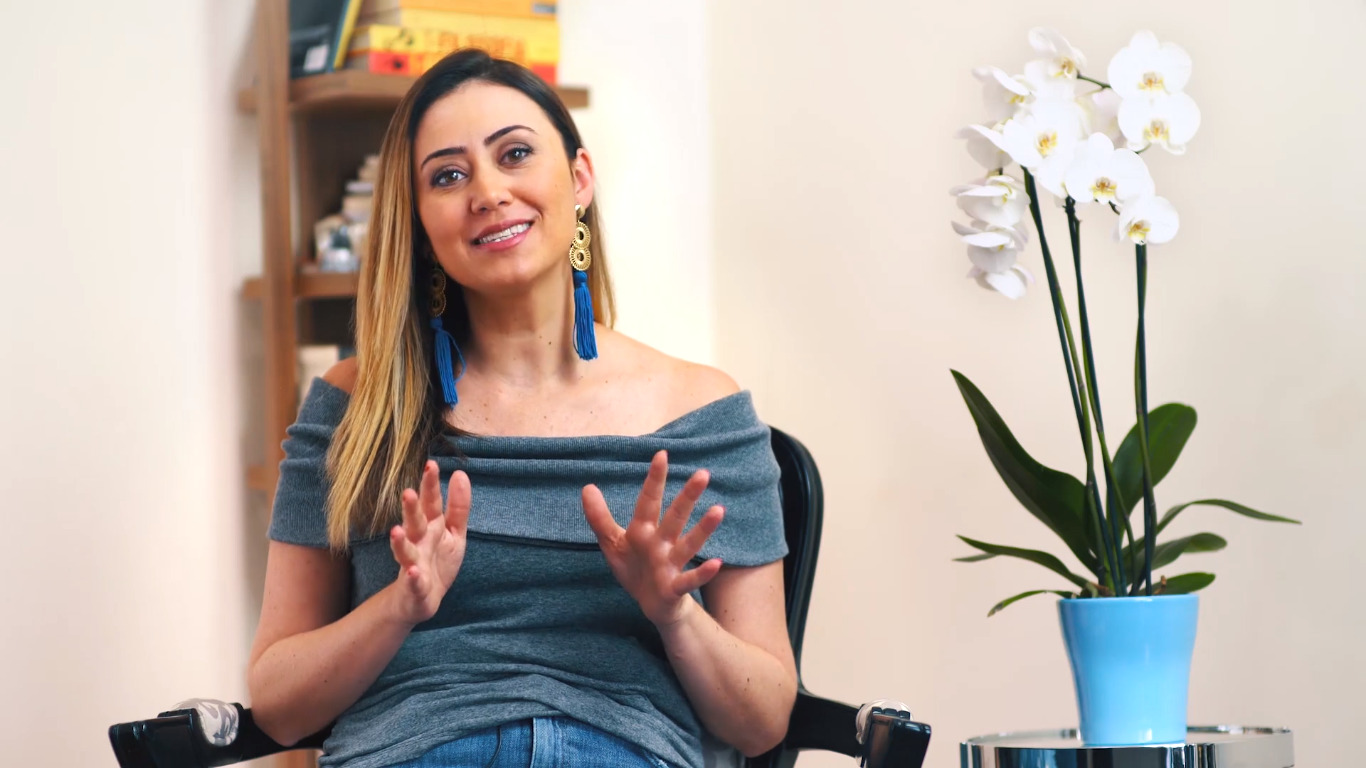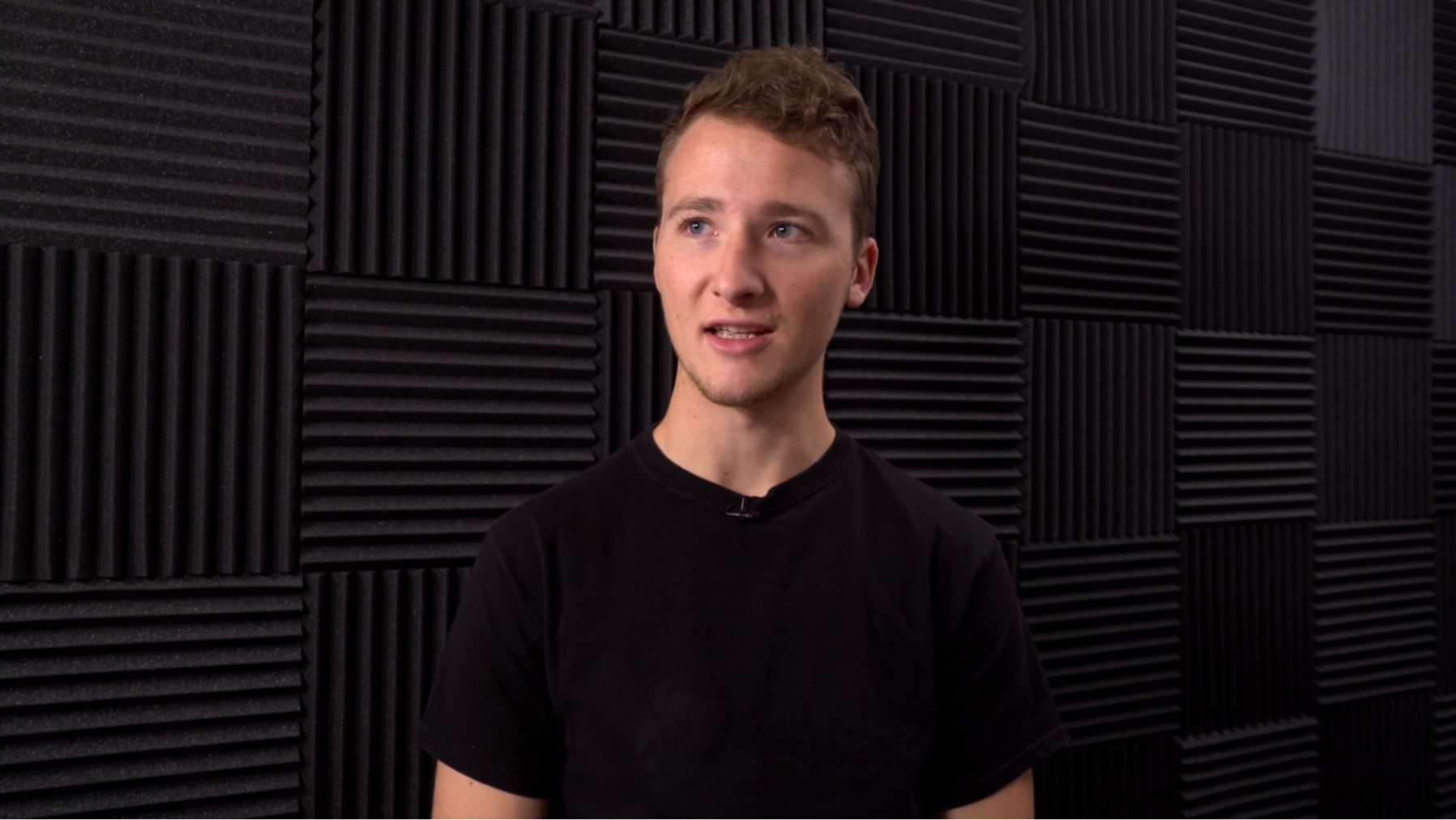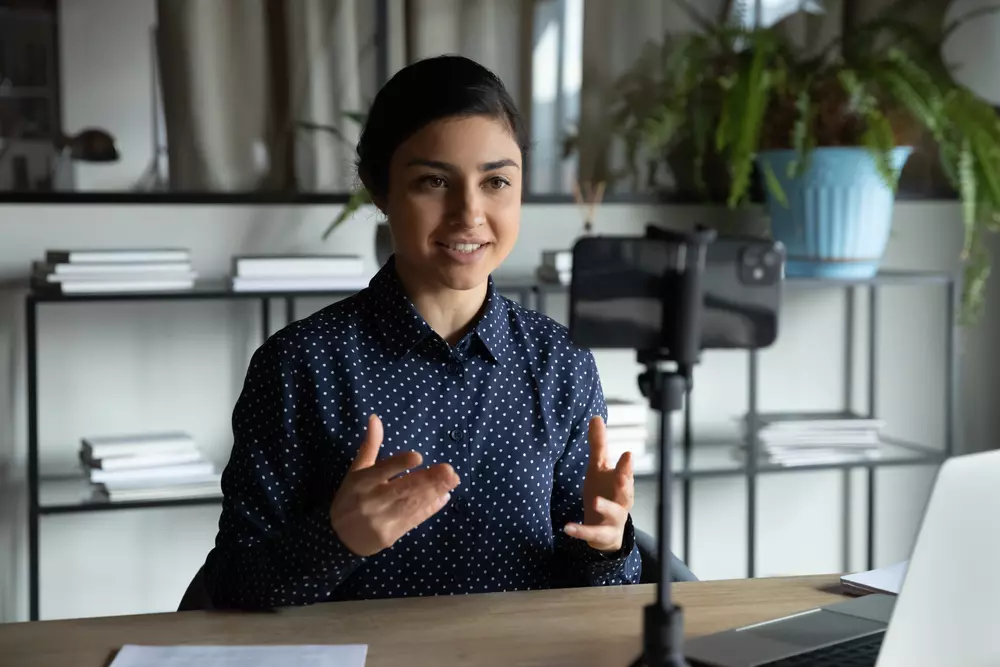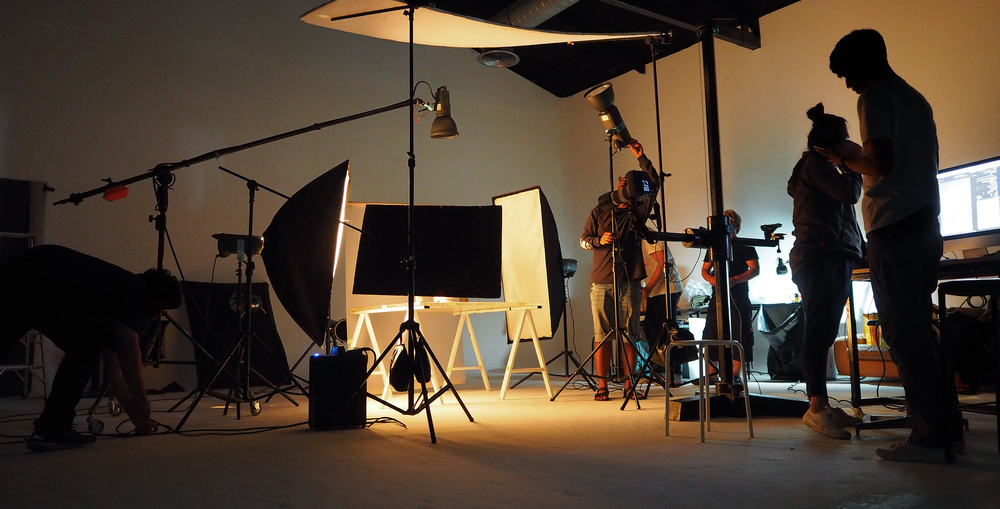
How to set up a home video recording studio
Learn with one of our video experts how to set up a recording studio at your own home.

What will we see in this post
There are some benefits of building a video recording studio at home:
- The possibility of having a scenario that fits your brand image;
- The convenience of always being ready to record;
- It’s cheaper if compared to renting a professional studio.
But, the main reason that makes it worth building your own recording studio is consistency.
With a video recording studio in your home, you will give your videos a uniform look, which will make them more easily recognizable.
Your audio will also become more consistent from one video to another, allowing your viewers to watch multiple videos in a row without hearing noise variations and differences in microphones.
And finally, you’ll be able to produce and publish your videos in a more consistent time frame, making it easy to plan your content creation.
So let’s take a look at how to achieve this Holy Grail of video production!
Scenario
Before discussing some scenario options, here is a super important tip: try to make your studio always ready to record.
A video shooting has several steps: focus, camera exposure, audio volume, the position of the microphone, lighting, framing, and other details.
Everything you’re able to set up keeping the same settings between shootings will save you a lot of time and will also help you overcome laziness.
As little time you spend setting up the scenario, the more time you’ll have to think about content that will delight and impress your audience.
That is why it’s important to choose a room in your house that you won’t mind setting aside for that.
Here, you have two options:
- You can choose a room in your house or office that will become the perfect scenario that will help your audience connect visually with you and your personality, or,
- You can use a solid color background that will simplify the image so that people aren’t distracted by the scenario, instead of focusing on what you are talking about.
Both are good options, depending on the content you are producing.
Scenario 1: Show them who you are
Using your home as your shooting set will make your audience feel closer to you, visually, while also showing them who you are.
Position your camera in a tripod in a room that will represent your content and set up a scenario. Balance your shooting set with colors, cushions, decorations, paintings, and souvenirs.
This formula is used by lots of YouTube channels, which helps prove it works. But it also means that you should try to be as original as possible when decorating if you want to stand out.

Background and foreground clearly separated and full of personality
Try to work the depth in your scenario. Why? What is this?
Calm down, I’ll explain.
A good framing is usually the one that simulates the depth of field (I’m saying simulate because the video is only a 2D image) with objects on the foreground and background. Close by and also far away from the camera.
Try not to shoot the video while leaning on the wall, get as far away from it as possible. That way you’ll have a foreground, yourself, and a background, a beautifully decorated wall.
That will improve the visuals of your video, and well-done content will deliver the credibility your material needs.
Try not to use natural light on your scenario, that way you can shoot videos at any time you’d like, day and night, without it affecting the uniform visual of your videos.
Once the set is ready, try alternate angles.
In order to change the dynamics of your video, presenting content different from the usual, or simply to give a breath of fresh air, you can reposition the camera in different angles so you can use your scenario to the full.
Scenario 2: Less is more
Lots of educational channels prefer this scenario to focus the audience’s attention on the message and nothing more: a solid color background.
By taking out all visuals elements, you make it easier, when editing, to add information and images that will complement what you are saying.
Here, you can bet on solid colors with textures and gradient overlay effects.
At Hotmart, we frequently use a solid blue background with a centralized light, on our informative videos, Hotmart Tips, on YouTube.
That light creates a gradient overlay effect that helps solve the issue of simulating depth of field, the one we mentioned before.

Doing that is quite simple. You can paint existent walls in your house or, my favorite, attach a photographic paper roll to use as a background on your video.
You can also buy several rolls of different colors to change up the videos. Just be careful not to overdo it and always use it in your favor to separate the content.
You can use a specific color for a segment of videos and another for other segments, for example. On this “scenario category”, we can briefly talk about the chroma key, the famous “green background”.
By using it, when it’s time for editing, you can change the green screen for basically anything you want. The problem is that it’s an advanced video technique and it’s very hard to achieve good results. For that reason, you should only use it if you know what you’re doing.
Sound
When you set up your own recording studio, pay special attention to the sound.
Since this will be the place where you will record most of your videos, it is essential that it has good acoustics. This means choosing a place with the least external noise possible and having control over the echo that your voice produces.
Try to provide an ideal environment for your microphone of choice so it can pick up your voice well.
There are two improvements you can make in an environment to enhance acoustics:
- Decrease the sound reflectivity of the surfaces (very technical, I know, but take a deep breath and I’ll explain it in a second) and
- Isolate the walls acoustically.
Try to make the environment ideal so that the chosen microphone can get your voice clearly.
Decrease the sound reflectivity of the surfaces
The first topic refers to eliminating the echo from your voice.
Hard surfaces in the environment tend to reflect the voice, and when they come back to you or your microphone, it creates an echo.
Concrete walls are particularly terrible in this aspect. The easiest way to mitigate the echo is, therefore, by reducing the number of surfaces where the sound can bounce.
If you put a carpet or a rug on the studio, or hang some thick blankets behind the camera and put a sofa with some cushions, that would certainly help in creating less echo.
You can also look for more professional solutions, such as acoustic foam, that once glued to the walls, they’ll attenuate airborne sounds and if you’d like, can even work as part of the scenario decoration.

Acoustic foam panels as background. Looks nice and it’s functional.
The acoustic foam panels also allow you to decorate your set only with what you’d like your audience to hear, allowing you not to need a sofa in the frame just for the sake of attenuating the echo, for example.
It isn’t necessary to cover all the walls with foam. You can do it only on big surfaces on the wall and ceiling that have exposed concrete.
Soundproofing
Here is where things may become expensive.
Isolating a room acoustically may cost thousands of dollars, besides the need to hire specialists to install the soundproof materials, build up walls and so on.
Therefore, what we’ll talk about here is not a definite solution, but it’s certainly the one that will bring the best results without the need to build soundproof walls and costing way too much.
When choosing which room will be your recording studio in your home that will become your video recording studio, consider the amount of noise coming from the street, the neighbors, and even other people in your home.
Ver essa foto no Instagram
Try to choose the quietest possible environment so you will have to make only a few adjustments.
The concrete walls, despite being lousy not produce an echo, are actually great for helping to insulate a room.
When it comes to the windows, not so much. So the less of them, the better.
And remember to cover the cracks under the doors to improve your chances of isolating your room.
The quieter your video recording studio is at any time of the day, the better it will be to record
your content at any time.
Bonus: Sound booth DIY
A lot of video formats don’t necessarily require you to speak directly to the camera. You can communicate in your video by narrating, for example.
This is often simpler because you don’t have to adjust an entire room and still try to avoid interfering with what the camera can see.
You’ll only need to find the quieter spot in your home and with the least echo such as a closet or wardrobe with a lot of clothes inside are good examples.
The closet case is simpler, just enter it, close the door and use your voice.
But in the case of the closet, you can open the door so that the sound hits the clothes inside and position your microphone lightly inside it. Thus, the echo of your voice in the environment will be largely drowned out by the clothes around the microphone.
So, are you ready to increase your content production with your home video recording studio?
Don’t think that your work with videos ends here. After recording all the content, there is a very important part: editing your material.
If you still have questions and want to learn more about this subject, also read our post that shows video editing tools.




